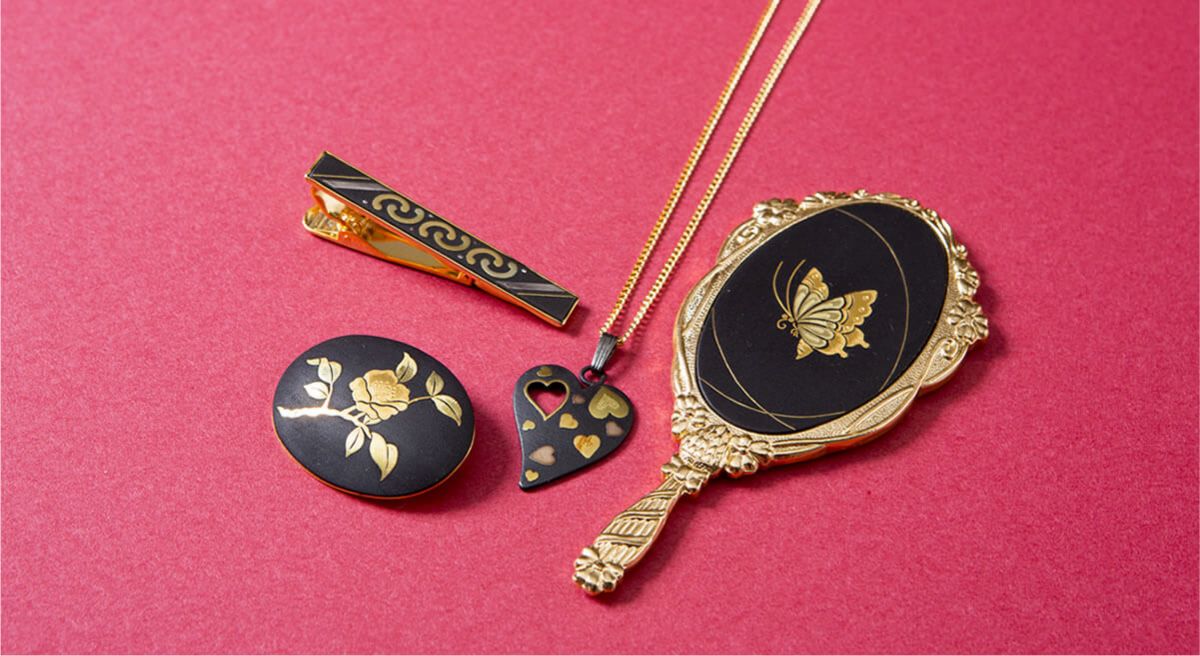
It is said that about 400 years ago, inlays were applied to the barrels of guns and to the brims of swords. Gold and silver were fitted into iron to draw various patterns. They are characterized by an elegant and fascinating style that respects the beauty of the iron. Currently, they are mainly produced for ornaments such as pendants and tie pins. It is a representative traditional craft of Kumamoto City, which has been designated as a national tradition by the Japanese government.
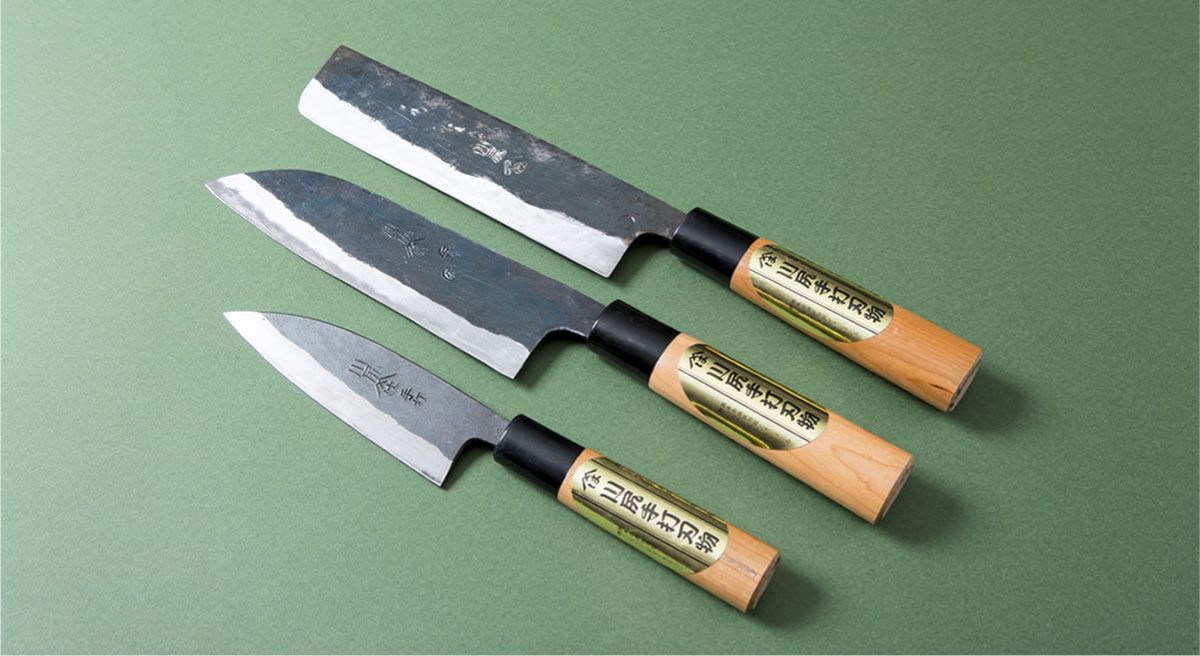
The tradition of making Kawashiri knives is said to have started since the Muromachi period (1338-1573) by the swordsmith Namihira no Yukiyasu. Kawashiri blades, which continue to adhere to the technique called "interrupted forging" where hard steel is sandwiched between soft steel and forged by hand, are characterized by their sharpness, durability, and profound beauty.
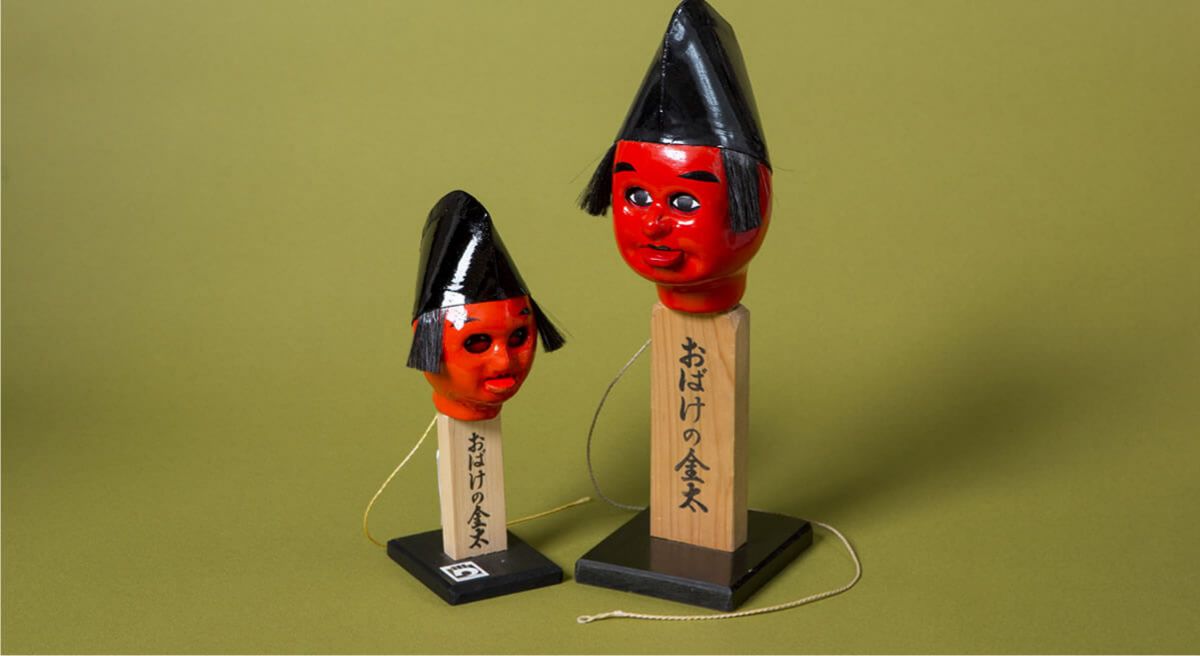
When the daimyo Kiyomasa Kato was building Kumamoto Castle during the XVII century, there was a popular foot soldier called "Odoke no Kinta (Funny Kinta)" who made people laugh with funny faces. About 160 years ago, the Karakuri doll made by the puppeteer Hikoshichi Nishijinya was based on the legend of Kinta and named "Obake no Kinta (Ghostly Kinta)". A local toy that amazes everyone with its tongue coming out and eyes turned back when one pulls the string.
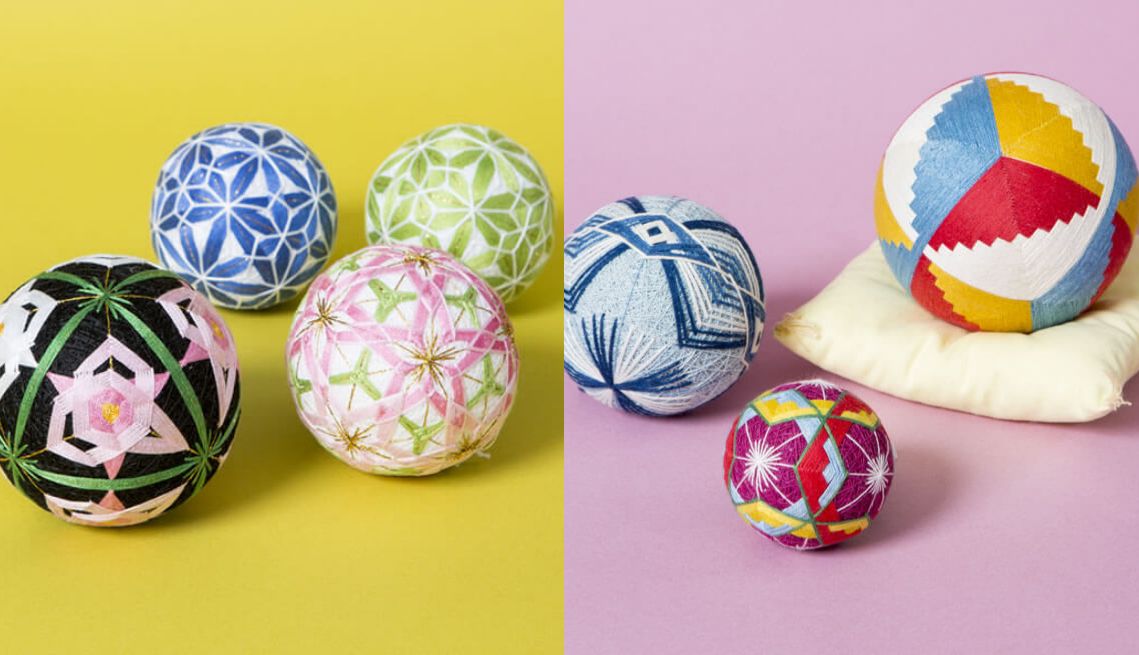
Higo Temari balls have a complex pattern made of French embroidery threads around loofah. They were created by the maids of castles during the Edo period (1615-1867) and this tradition has been handed down to castle towns in various places, and inherited by Higo women for generations.
Higo Mari balls are cotton threads dyed with natural vegetable dyes, centered on rice husks, and they are made by hand with 13 kinds of traditional patterns by changing the color scheme. In the middle of the Edo period, when cotton became readily available to the general public, Temari balls became popular in castle towns and were used as toys for the New Year and as decorations for the Hina Matsuri or Girls' Day.
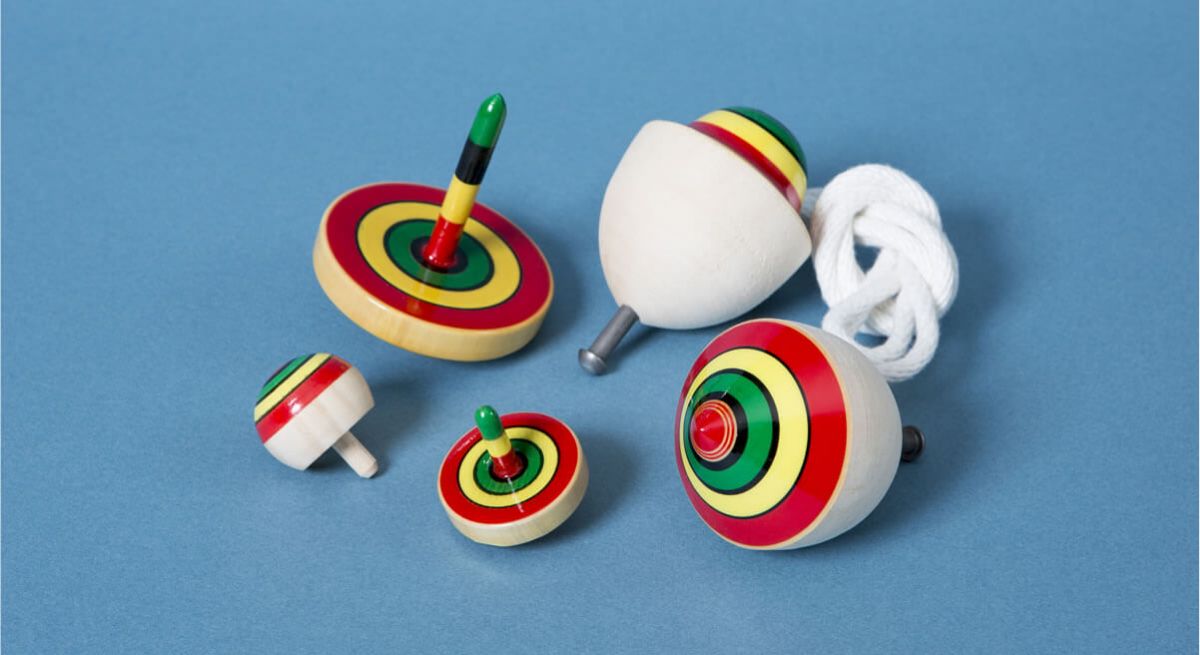
Higo tops, which have been made since the Edo period, have been popular as lucky charms and souvenirs. There are 12 types of shapes, and each shape has a different name such as "tonbo," "chonkake," or "hineri daruma." The painted colours are red for the heart, yellow for the liver, green for the kidneys, black for the pancreas, and colorless for the lungs as according to traditional Chinese medicine, and they are believed to bring good health.
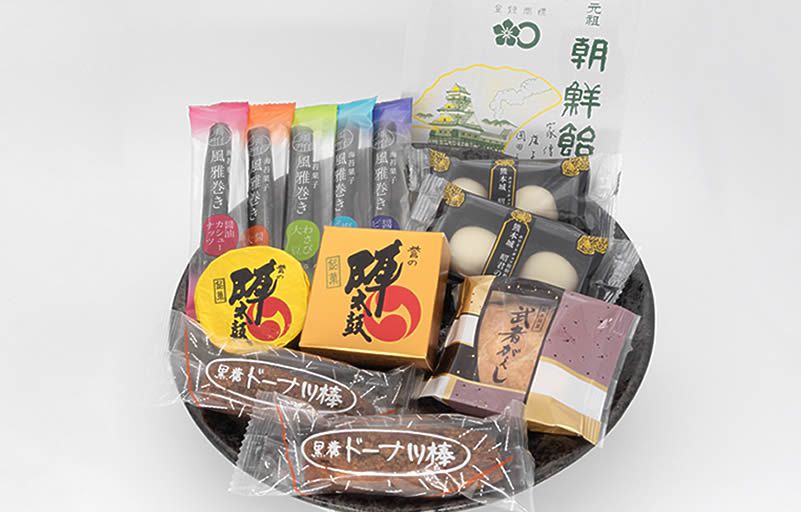
From traditional sweets inherited from the Azuchi-Momoyama period, to sweets with Kumamoto Castle motifs, there are many famous confections full of individuality that reflects the unique history and culture of Kumamoto.
Made on the land blessed with magnificent nature and abundant water resources, all these sweets are the proud gems of Kumamoto.
These famous confections are also popular with local people, and perfect for a souvenir.
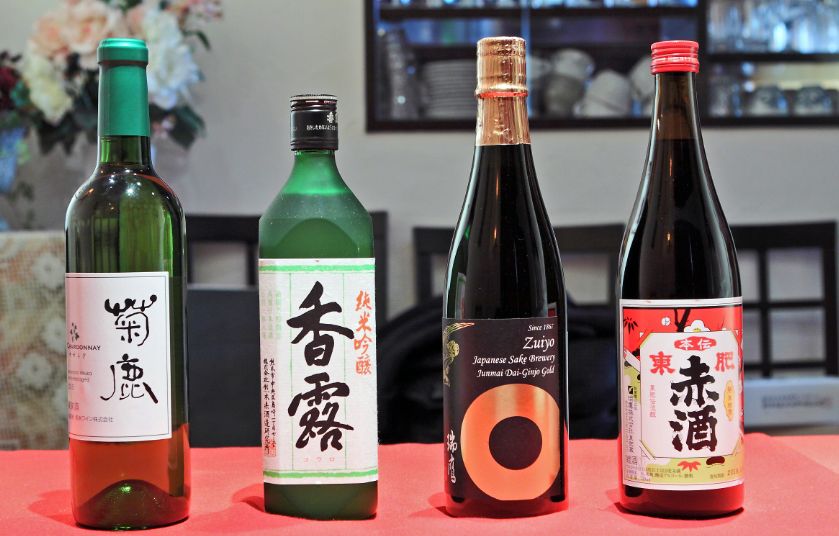
Pure, abundant water and rice. Kumamoto has all the conditions for making good sake.
And when human skills and wisdom are added to that, a delicious sake can be born. You can buy various kinds of sake in Kumamoto city. Traditional "red sake" that can also be used for cooking, or the "Zuiyo Junmai Daiginjo Kin" made by local rice farmers, or the so-called "phantom sake" "Junmai Ginjo Kohro", or the "Kikuka Wine" and "Higo Rokka" made by using the grapes of the town of Yamaga, etc. How about some of Kumamoto's delicious sake as a souvenir?
One of the few breweries that conveys traditional "red sake" to the present. We continue to evolve with the aim of "sake that values the charm of the rice itself" by brewing the sake rice that we make with local rice farmers and our own groundwater from the Aso headwaters.
The "Kohro" sake is called "phantom sake" and has fans all over the country. There is also a research institute that protects "Kumamoto yeast", wchich was born at the request of local brewers, and is involved in scientific and training for technicians to pass on sake brewing to future generations.
Under the motto of "local production for local consumption," the fresh-tasting wines made with grapes from contract farms have won numerous awards at the Japan Wine Competition. The "Kikuka" series using grapes from Kikuka-cho, Yamaga City, and the "Higo Rokka" series with its beautiful flower-patterned label are popular.